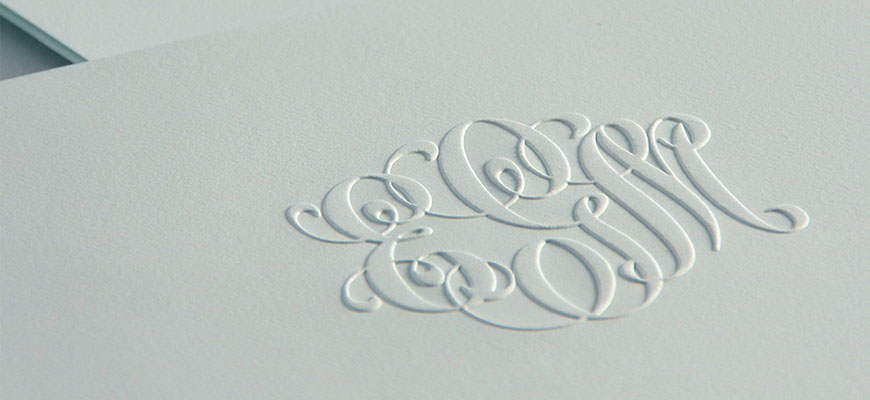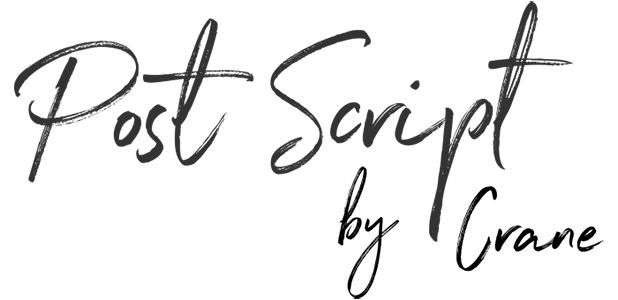Engraving and thermography create some stunning effects but did you know printing presses can create equally beautiful – if very different – results without using any ink?
Both blind embossing and blind debossing use no ink during printing but instead use pressure to impress a design or message into paper.
Blind embossing features the image popping out of the paper, like Braille letters. Blind debossing, on the other hand, presses the image into the paper, like footprints in the sand.
Both can give printed pieces added depth and visual appeal and make a unique and beautiful statement on their own or when combined with ink printing techniques as part of a combined design.
Embossing

The simple, no-ink elegance of embossing contributes to its timeless appeal and makes it very easy to distinguish from other types of printing.
Embossing, or blind embossing, is similar to engraving in that a raised image is created by pressing paper onto a copper plate.
But unlike engraving, no ink is used in the process. Instead, the raised image stands on its own on the page, bringing an understated elegance and highly sophisticated look to the final product.
- For every embossed project, a master craftsman creates a one-of-a-kind die similar to an engraving plate, depicting the desired initials or image.
- A particularly high quality paper is selected – such as Crane’s beautiful, soft 100 percent cotton sheets. An exceptional paper is essential in securing the best quality final impression due to the nature of embossing as a printing process.
- The paper is pressed into the die and the stunning image is revealed. The technique can also cater to a multi-dimensional design, giving several steps or layers of depth, for a beautiful, rich effect.
Whether used alone or in conjunction with another ink-based printing technique, embossing can add an elegant, contemporary touch to all types of stationery.
Its subtlety lends itself well to business stationery, including letterhead and business cards. But it’s an equally excellent choice for adding family monograms or a coat of arms to personal stationery, such as correspondence cards or a wedding invitation for example.
No matter what use it’s put to, embossed stationery makes a sophisticated and subtle impression.
Debossing
Essentially the opposite of embossing, debossing involves pressing a design or lettering into the surface of paper, creating a recessed or sunken impression.
The results are just as subtle and distinguished as those of embossing and add an extra layer of texture and interest to your personalized stationery. So how does it work?
- As with an embossed design, a master craftsman creates a one-of-a-kind die similar to an engraving plate, depicting the desired initials or image.
- A particularly high quality paper is required here too to ensure the best final results – such as Crane’s beautiful, soft 100 percent cotton sheets.
- For debossing, the die is pressed into the paper, creating a relief of the design.
Debossing is not available on Crane’s personalized products but as a design element it’s one to look out for and understand where – and how – it has been applied in other products.
“An exceptional quality of paper is essential to assure the best quality print results from embossing and debossing.”
In Summary
Crane is proud to offer a full range of printing processes.
Over the years we have honed and perfected every tool and technique we need to craft the most stylish – and imaginative – personalized stationery at our customers’ request.
It’s all about taking that step away from the everyday.
Whether it’s a wedding invitation, social event, business fundraiser or a simple thank you note, leave your mark with expert printing craftsmanship from Crane.



Can you emboss an antler pattwrns?
Hi Deborah, yes we can indeed. We can follow up with you on how this process works!